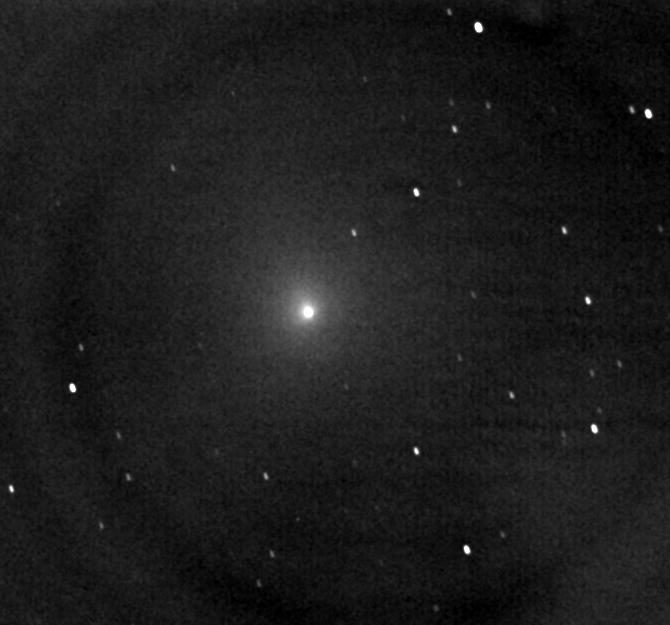
On the very, very cold night of Nov 22/23, 2018, I used the 12-inch telescope to acquire about one hours' worth of images of Comet 46P/Wirtanen and asteroid (433) Eros.
The main setup:
Notes from the night:
This comet will be one of the brightest of the year, and well-placed for observations in the early evening in December. You can read more about it at
I was curious about its appearance now, several weeks before the closest approach. It was pretty far south (Dec = -27), so the airmass was high, and the full Moon made the sky very bright.
Below is a stack of 8 x 30-second exposures in the V-band. You can see leftover flatfielding artifacts, and short trails for the stars, as I shifted images to align the comet. North is up, East to the left, and the field of view is around 20 x 20 arcminutes. The medium-bright star at one o'clock, about halfway to the edge of the frame (not the brighter one close to the edge) is UCAC4 311-002160, V=13.
Field center is close to
RA = 02:15:45.54 Dec = -27:44:47.9 (J2000)

The integrated light from the inner 10 arcsec of the comet is only about V=12. I hope that there's lots more light in the outer regions of the coma. Not much of a tail, if any, is visible in this short exposure -- due to the bright sky, I hope.
I tried the Swann filter, but the images showed considerably more flatfield issues than the V-band, and no extra detail in the coma. Bummer. Need to do more tests when there's no moon.
I also acquired about an hour's worth of V-band images of asteroid (433) Eros. On this evening, it was only about 0.32 AU from the Earth, and moving quickly through the sky.
The initial 30-second V-band images showed that the asteroid was close to saturation, so I decreased exposure times to 20 seconds for the bulk of the images.
A chart of the field is shown below. The size of the chart is about 25 by 25 arcminutes. Eros is the brightest object, just below and to the right of the center. The image is centered close to
RA = 69.43 Dec = +61.848 (J2000)
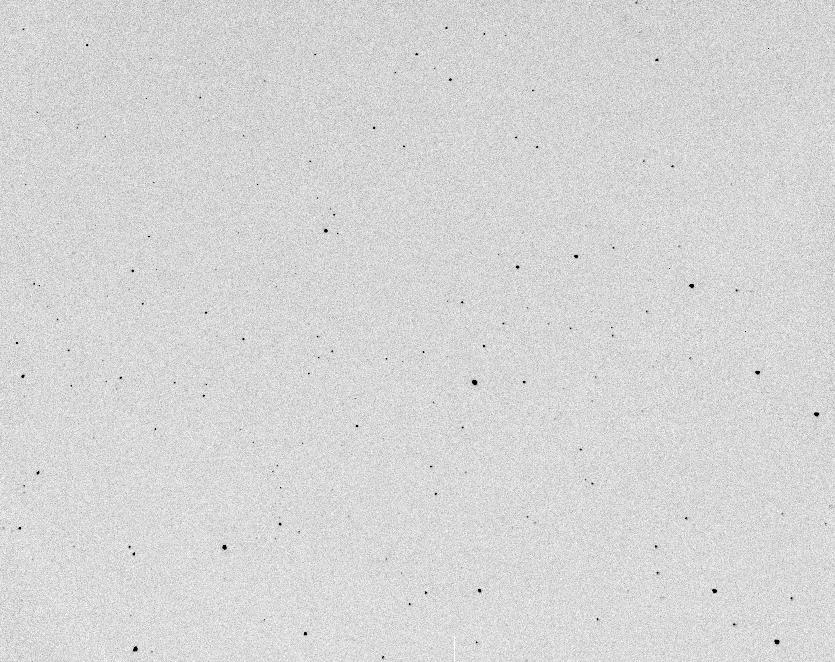
We ran the camera at -20 C. Nothing out of the ordinary.

However, since I was able to operate the camera at a much lower temperature than usual, I did a little detective work to check on its performance at different temperatures. I located median dark frames taken with the same exposure time (25 seconds) but at different temperatures on a number of nights over the past year. The histograms show an obvious trend:
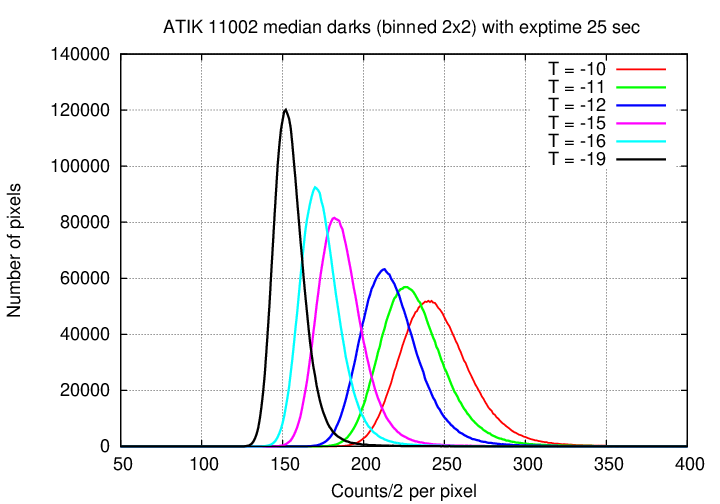
I measured the median value in each, and the standard deviation from the mean. Note the very nice logarithmic relationship between temperature and standard deviation in the dark count. The standard deviation decreases by about 1/e when the temperature drops by 10 C; that's easy to remember.
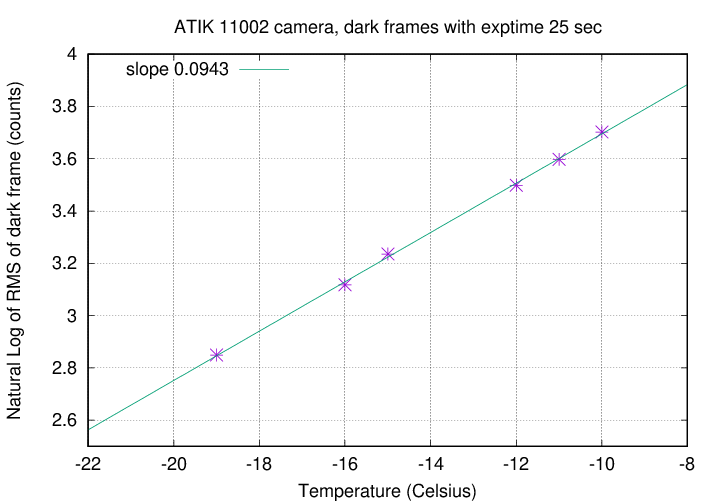
The sky value shows no clouds over this roughly 1-hour observing run.
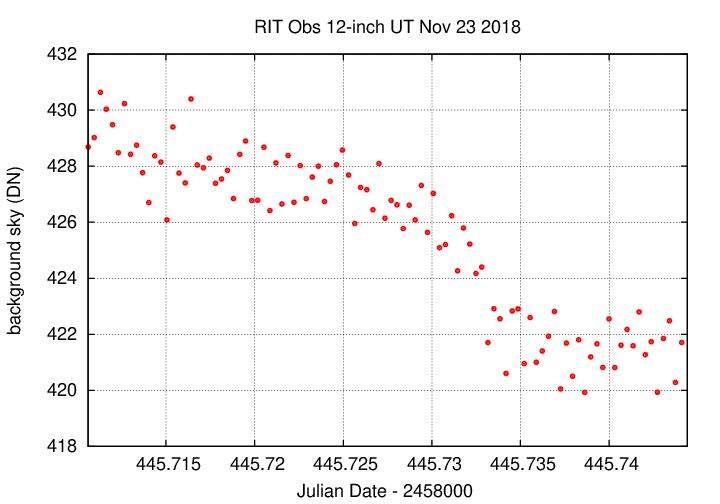
The FWHM is pretty steady.
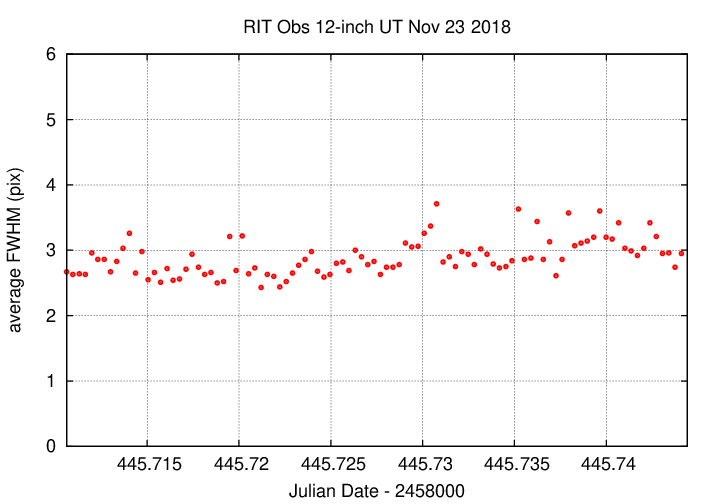
The photometric zeropoint didn't vary much.
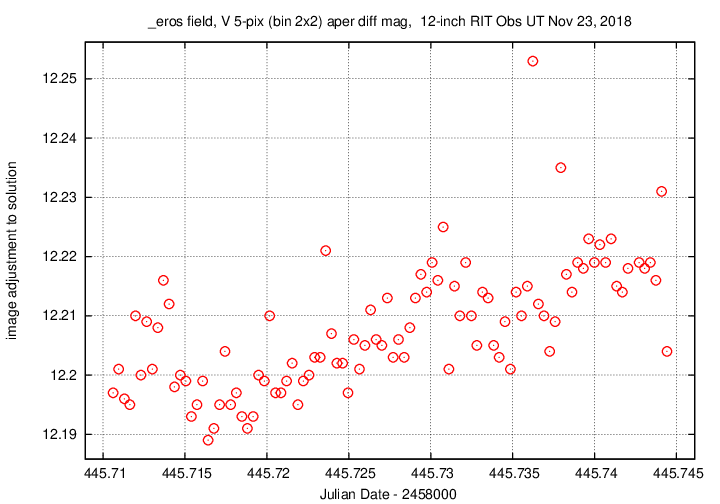
Using aperture photometry with a radius of 5 pixels (binned 2x2, each pixel is 1.34 arcsec, so a radius of 6.7 arcsec), I measured the instrumental magnitudes of a number of reference stars and the target. Following the procedures outlined by Kent Honeycutt's article on inhomogeneous ensemble photometry, I used all stars available in each image to define a reference frame, and measured each star against this frame.
Sigma-vs-mag plots show that the floor was about 0.005 mag overall, which is good.
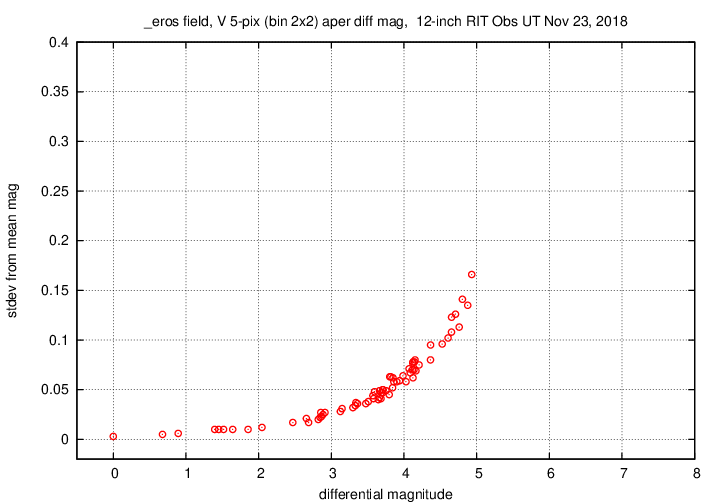
Last modified 10/24/2018 by MWR.